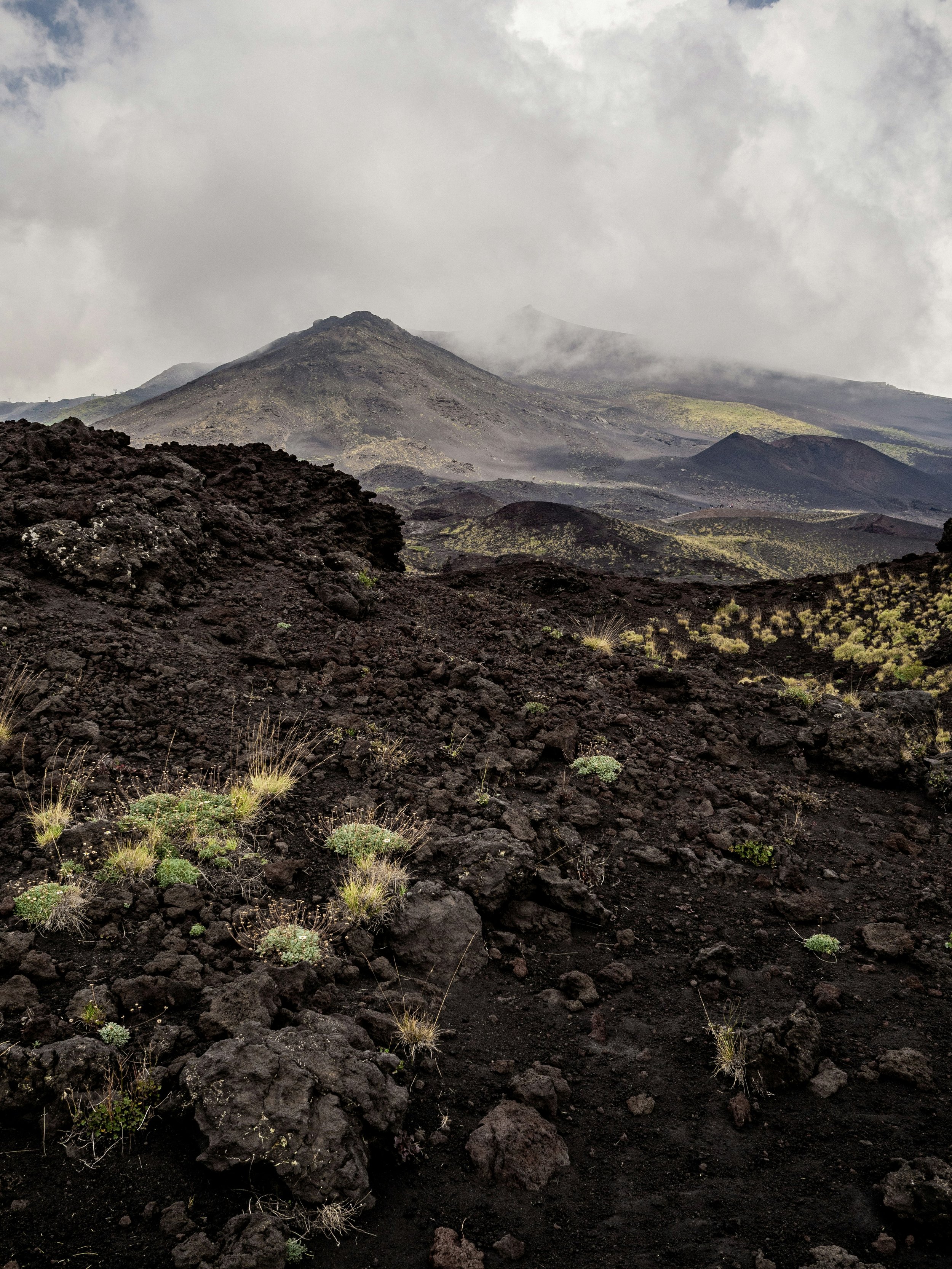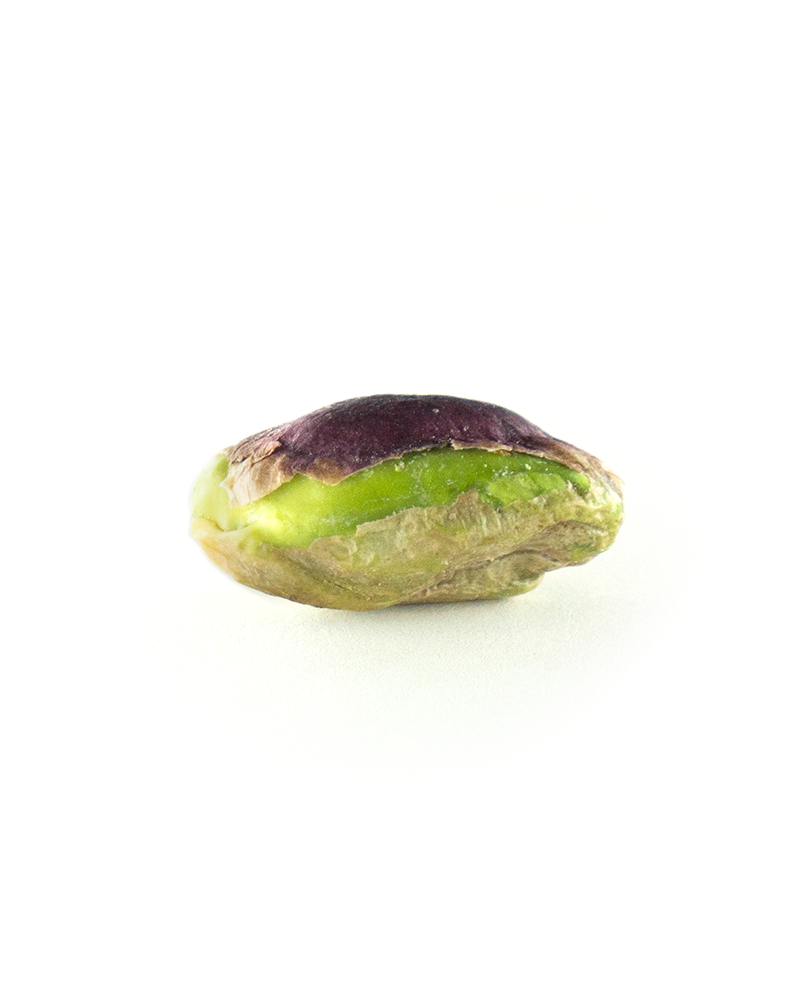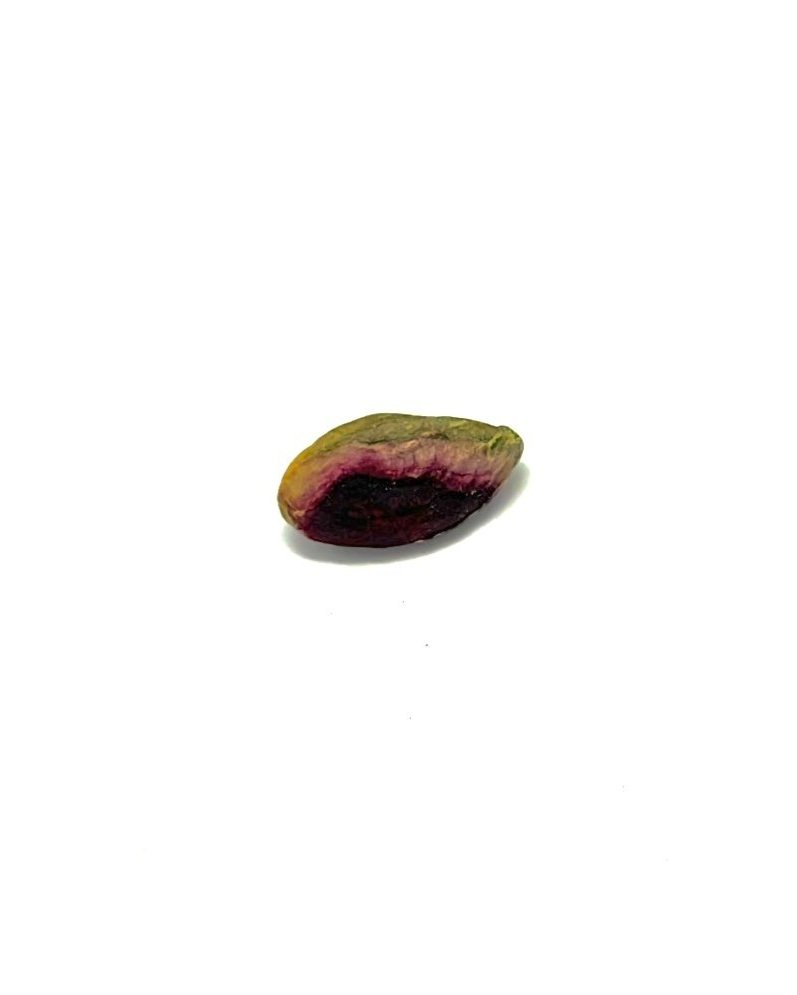
Bronte Pistachios (Sicily)
“Green Gold”
Indulge in the rare and luxurious taste of Bronte pistachios
Known as "green gold,” Bronte Pistachios are grown in mineral-rich black volcanic soil, on family farms located at the base of the volcano Mount Etna, in Sicily.
Coveted by some of the best pastry chefs in the world, Bronte Pistachios have a unique flavor profile that sets them apart from any other nut, and offers numerous health benefits—such as improving cardiovascular health, aiding digestion, and promoting weight loss, with high levels of unsaturated fatty acids, potassium, and fiber.
Harvest Day in Bronte.
We joined Samantha Pieraccini and her family in Bronte, at the base of the volcano Mount Etna, to harvest Sicily’s Bronte Pistachios, D.O.P.


Representing just 1% of the world's pistachio production, Bronte pistachios are one of the rarest pistachios in the world—and are highly sought after by top chefs and pastry chefs worldwide. Ancestral, time-tested organic harvesting methods are passed down within families and dictate that Bronte Pistachios be harvested only once every two years, a method devised to elude pesky aphids, without the use of pesticides.
It is during their harvest time that Bronte Pistachios gain their reputation as “green gold,” as these emerald beauties—like precious stones—have become a target of thieves and now require police protection due to their high value.
Savor the delicate flavor and exceptional health benefits of Bronte pistachios.
“In Italy, a pistachio cultivar of high quality is typical of Bronte (Sicily), an area around the Etna volcano, where the lava land and climate allow the production of a nut with intense green color and aromatic taste, very appreciated in international markets… “
“This native of central Asia has been cultivated for at least 3000 years, and was gathered from the wild long before that. The name derives from the Persian. In Genesis 43:11, Jacob sends gifts of almonds and pistachios to Egypt with his sons. A relative of the cashew, the pistachio is the seed of a drupe, and is unique for its greenish cotyledons. When the seed is ripe, the shell opens at one end. Pistachios first became available in the United States around 1880, but didn’t become popular until the advent of vending machines in the thirties. The shell is sometimes dyed red. Pistachios are now grown in India, the Far East, North Africa, and the American Southwest; Iran and Turkey are the major exporters.” - Harold McGee, On Food and Cooking (271)
“Remains of pistachio nuts dating from the sixth millennium BC have been found in both Afghanistan and southeastern Iran, where pistachio (Pistacia vera L) was probably first cultivated in regions close to where it grew wild. It was widely cultivated in the ancient Persian Empire, from where it gradually expanded to the west. For example, legend has it that the Queen of Sheba (Assyria, ca 10th century bc) monopolized a limited crop of nuts for her exclusive use.2 However, the Assyrians and the Greeks knew that pistachios could be used as medicines, aphrodisiacs, and antidotes. By the end of his reign, Emperor Tiberius, the Roman consul of the province, introduced pistachios into Italy. From Italy, they had spread into Mediterranean regions in southern Europe and North Africa. Around the 10th century, pistachios were also cultivated in China and more recently in Australia, New Mexico and California.” - Source.
“Incorporating Bronte pistachios into your diet not only provides a delicious and luxurious snack but also offers various health advantages for optimal well-being.”
Excellent Source of Protein
Aside from their exquisite taste and emerald color, Bronte pistachios are packed with a range of nutrients that may promote overall health and wellbeing.
They are an excellent source of protein, which is essential for building and repairing tissues in the body.
One ounce of pistachios contains around 6 grams of protein, making them an ideal snack for active individuals or those looking to boost their protein intake.
Mandalari, G., Tomaino, A., Arcoraci, T., Martorana, M., Turco, V.L., Cacciola, F., Bisignano, G., & Saija, A. (2010). Characterization of polyphenols, lipids, and dietary fiber from pistachio skins aiming to their potential use in food products. Journal of Agricultural and Food Chemistry, 58(22), 11476-11481. doi: 10.1021/jf102770t
Great Source of Minerals, Trace Elements
According to researchers in Rome, Italy, “Bronte’s pistachio is an excellent source of minerals, among these K (962 mg/100g) and P (416 mg/100g) in major amount (Table 1). Even trace elements were detected in quite high amounts, Fe, Zn and Cu were well represented (4.5, 2.1 and 1.2 mg/100g, respectively)
The peculiar lavic soil as well as the ground water composition in the area of Volcano Etna where Bronte’s pistachios are cultivated, may have contributed to the nut trace element profile.“
—Ahmad, Z., Bosco, S.J.D., & Wahid, M.A. (2019). Pistachio consumption and cardiovascular health. International Journal of Food Science and Technology, 54(11), 3574-3584. doi: 10.1111/ijfs.14211
Uniquely Rich in Vitamins, Minerals and Antioxidants
Pistachios are a good source of antioxidants, including vitamin E, which can help to protect the body against oxidative stress and inflammation. Pistachios contain a range of other vitamins and minerals, including vitamin B6, thiamine, magnesium, and phosphorus, all of which are essential for maintaining overall health and wellbeing.
According to a study in Messina, Italy, “Pistachio nuts are a rich source of phenolic compounds, and have recently been ranked among the first 50 food products highest in antioxidant potential…The excellent antioxidant activity of pistachio skins can be explained by its higher content of antioxidant phenolic compounds. […] “
“Our work has contributed to clarify some particular characteristics of Bronte pistachios and the specific antioxidant power of pistachio skins... Introduction of pistachios in daily diet may be of undoubted utility to protect human health and well-being against cancer, inflammatory diseases, cardiovascular pathologies and, more generally, pathological conditions related to free radical overproduction.”
—Antonio Tomaino, Maria Martorana, Teresita Arcoraci, Domenico Monteleone, Corrado Giovinazzo, Antonella Saija, Antioxidant activity and phenolic profile of pistachio (Pistacia vera L., variety Bronte) seeds and skins, Biochimie, Volume 92, Issue 9, 2010.
Great source of Gut-Healthy Fiber
Pistachios are a great source of fiber, with one ounce providing around 3 grams of dietary fiber. Fiber is essential for maintaining healthy digestion, supporting gut health, and promoting feelings of fullness and satiety.
Regular consumption of foods rich in dietary fiber, like whole grains and nuts, is considered to have health benefits; an inverse relationship between high dietary fiber intake and reduced coronary heart disease risk has been reported. [28]
“Total fat content was among the lowest compared with other nuts….and with other pistachio varieties. It has been demonstrated that fat content and its composition are strongly influenced by place of origin and species in nuts. Bronte’s pistachio is also a good source of dietary fiber and is among the highest fiber nuts. Bianca analyzed in this study contained 15.3 mg/100g, approximately 80% of this was represented by the insoluble fraction.“
— Laura D’Evoli, Massimo Lucarini, Paolo Gabrielli, Altero Aguzzi, Ginevra Lombardi-Boccia (2015) Nutritional Value of Italian Pistachios from Bronte ( Pistacia vera, L.), Their Nutrients, Bioactive Compounds and Antioxidant Activity. Food and Nutrition Sciences,06,1267-1276. doi: 10.4236/fns.2015.614132
Naturally Support Hormone Balance and Athletic Performance
Natural compounds found in raw pistachios may help balance hormones and reduce insulin and cortisol levels, leading to improved metabolic health.
Additionally, studies have shown that consuming pistachios daily may reduce muscle soreness and help maintain muscle strength, which could potentially enhance exercise tolerance and training adaptations in athletes.
“Consumption of fruits and nuts has been associated with reduced risk of cardiometabolic disease. Evidence suggests that increasing consumption of both could help improve Americans' nutritional status and reduce the risk of chronic diseases.”
Great Source of Unsaturated Fatty Acids
Another key nutrient found in Bronte pistachios is unsaturated fatty acids. These healthy fats have been shown to have a range of health benefits, which may include reducing the risk of heart disease and stroke.
According to a study published in the Journal of Nutrition, consuming a diet rich in pistachios was found to improve cholesterol levels and reduce inflammation in the body, both of which are key risk factors for cardiovascular disease.
Ahmad, Z., Bosco, S.J.D., & Wahid, M.A. (2019). Pistachio consumption and cardiovascular health. International Journal of Food Science and Technology, 54(11), 3574-3584. doi: 10.1111/ijfs.14211
“Consumption of 57 g/day of pistachios in prediabetic subjects during eight weeks resulted in benefits in glucose metabolism and reductions in insulin resistance, inflammation, and several gene expressions, such as resistin, IL-6, fibrinogen, oxidized LDL-c, and platelet factor.“
Rich in Potassium, Supports Blood Pressure Levels.
Pistachios are a rich source of potassium, a mineral that plays a key role in regulating blood pressure levels.
According to the American Heart Association, a diet high in potassium has been linked to a lower risk of hypertension and cardiovascular disease, making pistachios a heart-healthy snack option.
SOURCES:
Fraser G.E., Sabaté J., Beeson W.L, Strahan T.M. A possible protective effect of nut consumption on risk of coronary heart disease. The Adventist Health Study. Arch. Intern. Med. 1992;152:1416–1424. - PubMed
Sabaté J., Salas-Salvadó J., Ros E. Nuts, nutrition and health outcomes. Br. J. Nutr. 2006;96:S1–S102. - PubMed
King J.C., Rechkemmer G., Geiger C.J. Supplement: 2007 Nuts and Health Symposium. J. Nutr. 2008;138:1734S–1765S. - PubMed
Brufau G., Boatella J., Rafecas M. Nuts, source of energy and macronutrients. Br. J. Nutr. 2006;96:S24–S28. - PubMed
Mandalari, G., Tomaino, A., Arcoraci, T., Martorana, M., Turco, V.L., Cacciola, F., Bisignano, G., & Saija, A. (2010). Characterization of polyphenols, lipids, and dietary fiber from pistachio skins aiming to their potential use in food products. Journal of Agricultural and Food Chemistry, 58(22), 11476-11481. doi: 10.1021/jf102770t
Ahmad, Z., Bosco, S.J.D., & Wahid, M.A. (2019). Pistachio consumption and cardiovascular health. International Journal of Food Science and Technology, 54(11), 3574-3584. doi: 10.1111/ijfs.14211
Dreher, M.L., & Maher, C.V. (2019). Pistachio nuts: Composition and potential health benefits.
Nishi SK, Viguiliouk E, Kendall CWC, Jenkins DJA, Hu FB, Sievenpiper JL, Atzeni A, Misra A, Salas-Salvadó J. Nuts in the Prevention and Management of Type 2 Diabetes. Nutrients. 2023 Feb 9;15(4):878. doi: 10.3390/nu15040878. PMID: 36839236; PMCID: PMC9965730.






